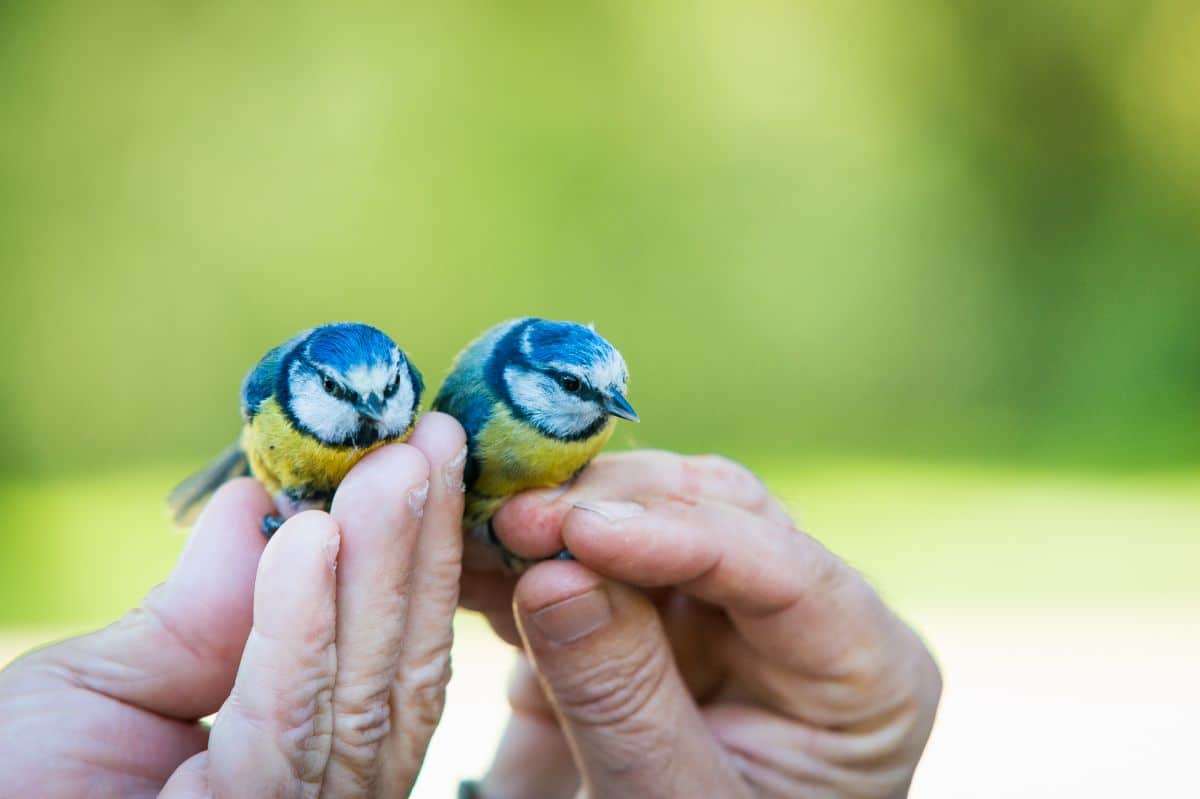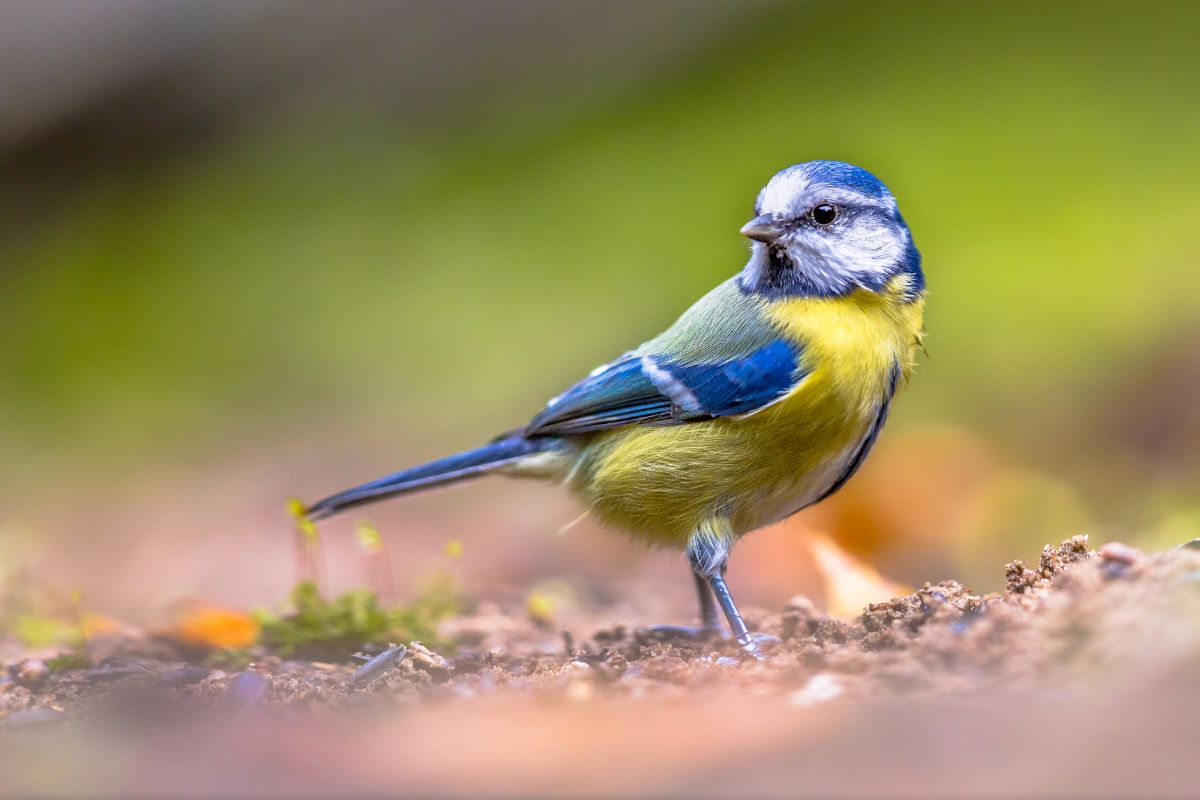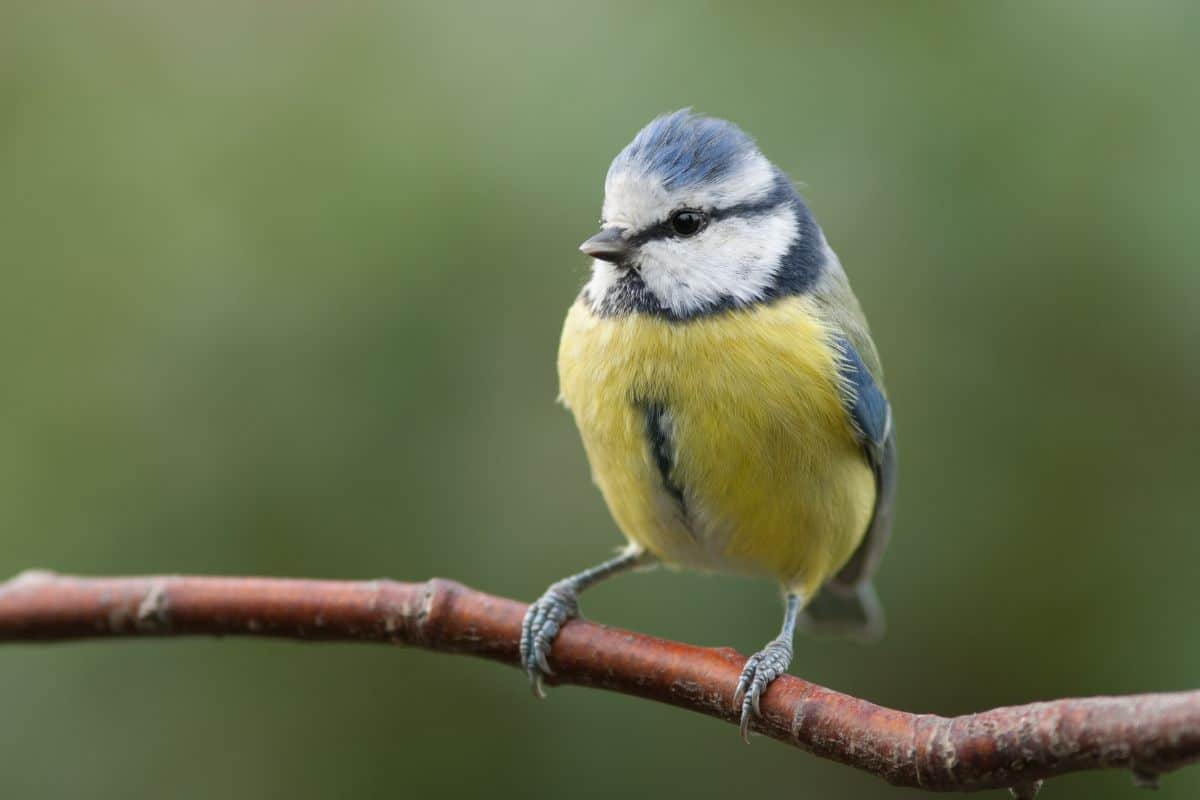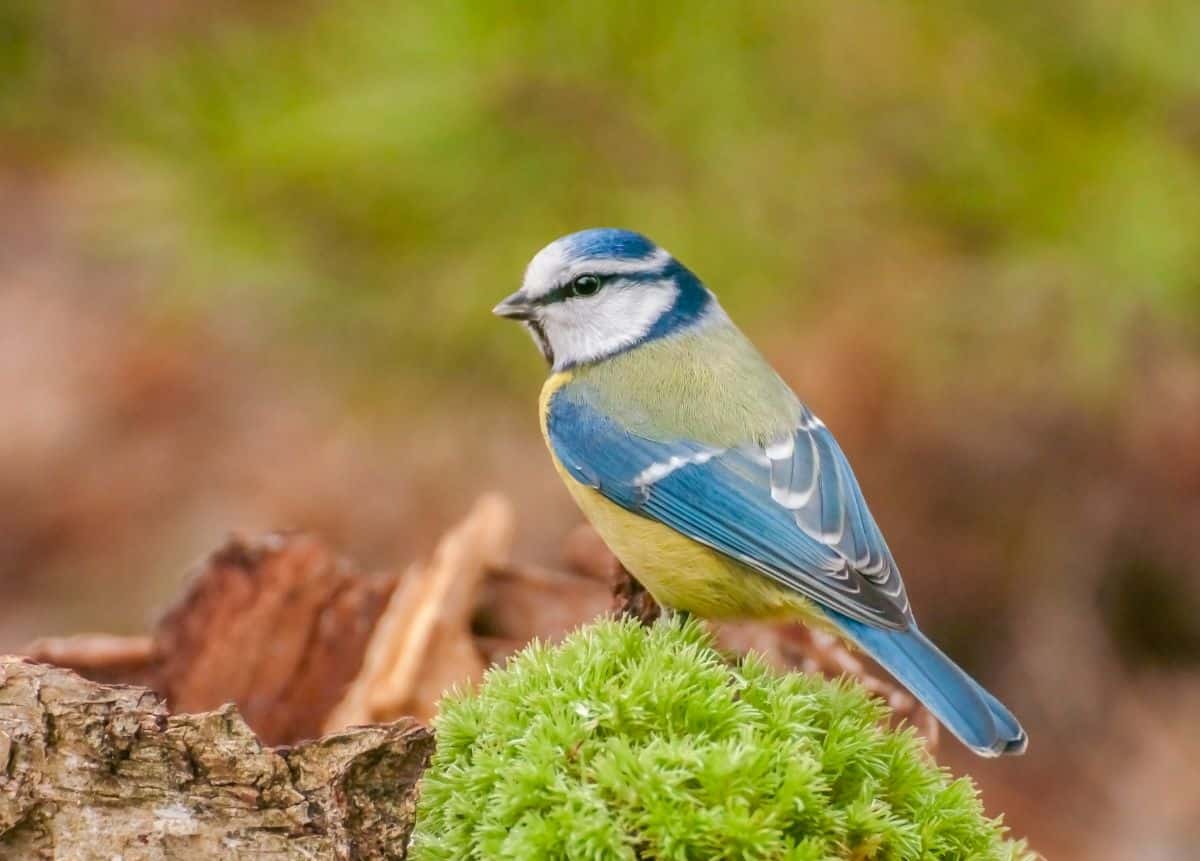The blue tit is a common bird species often seen in urban areas, gardens, and the wider UK’s countryside. They have blue tits, white cheeks, yellow breasts, and blue caps, making them some of the most colorful garden visitors.

The blue tit is scientifically known as Cyanistes caeruleus. It belongs to the Paridae family, including the titmice and chickadees.
Blue tits are wonderfully acrobatic, making it seamless for them to cling, swing, and peck for food at remarkable angles on feeders. They’re also some of the most exciting and liveliest garden birds, thanks to the “Ti-ti-chuuuuuuuur” call they make while moving around the neighborhood.
You’ll effortlessly find these little energetic birds in woodland areas with bushes and trees. They find their food and also breed in such areas. Watching these birds perform their acrobatics skillfully to catch their prey is fun.
Contents
Blue Tit’s Identity
Blue tits got their name from their plumage’s blue color. Their blue tails and wings with a tinge of green on their backs make them overly beautiful.
You can also identify them with their bluish backs, brighter blue wings, and yellow underparts. While the male and female blue tits are identical in appearance, their juveniles are a little duller with white cheeks or blue caps.
People often confuse blue tits with great tits as their wings and bodies are similar in color. However, you can quickly tell these two species apart by their head coloration.
Great tits have a non-dissected white cheek and a large black crown. On the contrary, blue tits have a dark line running through their white cheek and a blue dome.
Distinctive Differences Between Male and Female Blue Tits

You may have read that a male blue tit has a more vibrant coloration than his female counterpart, and you’re probably hoping this might help you to distinguish their sexes when they’re together in a garden.
Well, it’s nearly impossible to count on such luck. The male and female blue tits will neither hang around long enough nor get close enough for you to tell the difference. Noting the difference between them is tricky if you rely on their physical appearance alone.
Identification During the Breeding Season
Despite the male having a brighter plumage with a deeper blue on its crown, you will not quickly notice these distinct features unless it’s stationary.
However, if you study the behavior of these birds, especially during the breeding season, things might become less complicated. Here are behavioral considerations to help you contrast female blue tits from male ones.
April
April is the best time to differentiate the male blue tits from their female counterparts. This is when their breeding season begins. Usually, at this time, both sexes are active but involved in different activities. At this point, female blue tits busy themselves building their nests almost single-handedly.
You’ll often spot a female blue tit with moss in its mouth, and you can tell what she’s up to. Once the construction of the cup structure is complete, the female blue tit single-handedly seeks out soft lining material, such as wool, hair, fur, and feathers. It takes a female blue tit about one to two weeks to complete this process.
During the breeding season, the male blue tit becomes more territorial. It also becomes more vocal and quickly gets into little skirmishes with other males to protect its female.
Interestingly, male blue tits are naturally polygamous and are generous enough to share the love. They think about having several pregnant females within their territories during breeding.
A male blue tit is highly responsible. He feeds all the females and their chicks.
May
Female blue tits begin laying eggs at the start of May. At this time, the chances of seeing them become increasingly slim.
Considering that a female blue tit lays one egg a day, she is barely left with little time and energy to do other things. Usually, she has a massive clutch of between 8 and 12 eggs. Sometimes, the clutch might get as large as 16 eggs.
Contrary to his female counterpart, the male blue tit, at this time of the year, makes multiple return journeys to feed the female partner as they incubate the eggs.
While incubating, the female blue tit plucks some feathers from her chest. This process is known as a brood patch and allows the bird’s skin to stay in contact with the eggs, thereby keeping them warmer.
After the chicks are hatched, the male blue tit does most of the feeding, with the female one assisting from time to time. The staple diet of the nestlings is particular caterpillars and insects.
Outside the Breeding Season

It’s not relatively easy to differentiate male blue tits from female ones outside the breeding season. Spend some time in your garden to observe the behaviors of the birds. Try to understand their patterns and habits. During this period, pay keen attention to the mission of each blue tit as that will help you identify their gender.
Once you’ve drawn a distinctive difference between the males and females, try comparing their neckbands. Also, learn to distinguish between a thinner and thicker stripe. It would be a lot easier if you were to spot both the male and female blue tits together.
Attracting Blue Tits to Your Garden
People love these cheery and bright garden visitors for their trilling chirp and cheeky nature. They look nearly exotic next to the dull hues of blackbirds and sparrows. So, how do you attract these garden diners into your gardens?
Food
Blue tits love a range of feed. However, they’re particularly passionate about suet pellets and suet balls. If you wish to use these feeds to attract blue tits, hang them away from trees and fences, as these are ideal domestic cat perches, which are the major causes of mortalities in blue tits.
Peanuts
Another best feed for blue tits is peanuts. They are an excellent source of proteins for these birds.
However, be careful not to leave the peanuts in feeders during the nesting seasons. The adult male blue tits may carry them and feed the chick in large proportions, yet peanuts are highly indigestible to the young blue tits.
Berries
Tits are incredibly social birds, and you can spot them among great tits. During the autumn months, they feed on hawthorn berries and elder.
Therefore, you may consider planting these berry-rich trees if you have some outdoor space. This way, you can be sure they will attract blue tits to your backyard from September through December.
Feeders
Blue tits are fond of lunchtime acrobatics. You should provide feeders they can effortlessly grip onto as they eat. Use a mesh peanut feeder. It’s appropriate for them to hop about.
Brooding
Blue tits, in most cases, have their broods in garden nest boxes. When hanging your nest box, please consider placing it in the north-easterly direction. This will enable you to keep the chicks away from wet winds and intense sun rays.
Winding Up

It’s increasingly difficult to distinguish between male and female blue tits with the naked eye. However, if you pay attention to their behavior during their breeding season, it becomes easier to distinguish the male tits from female ones.
So, you think of having dozens of these white cyan visitors? Well, be a little generous: Have a garden with rich wildlife-friendly flowers and regular feeds, and you will host these inquisitive creatures within the neighborhood.
